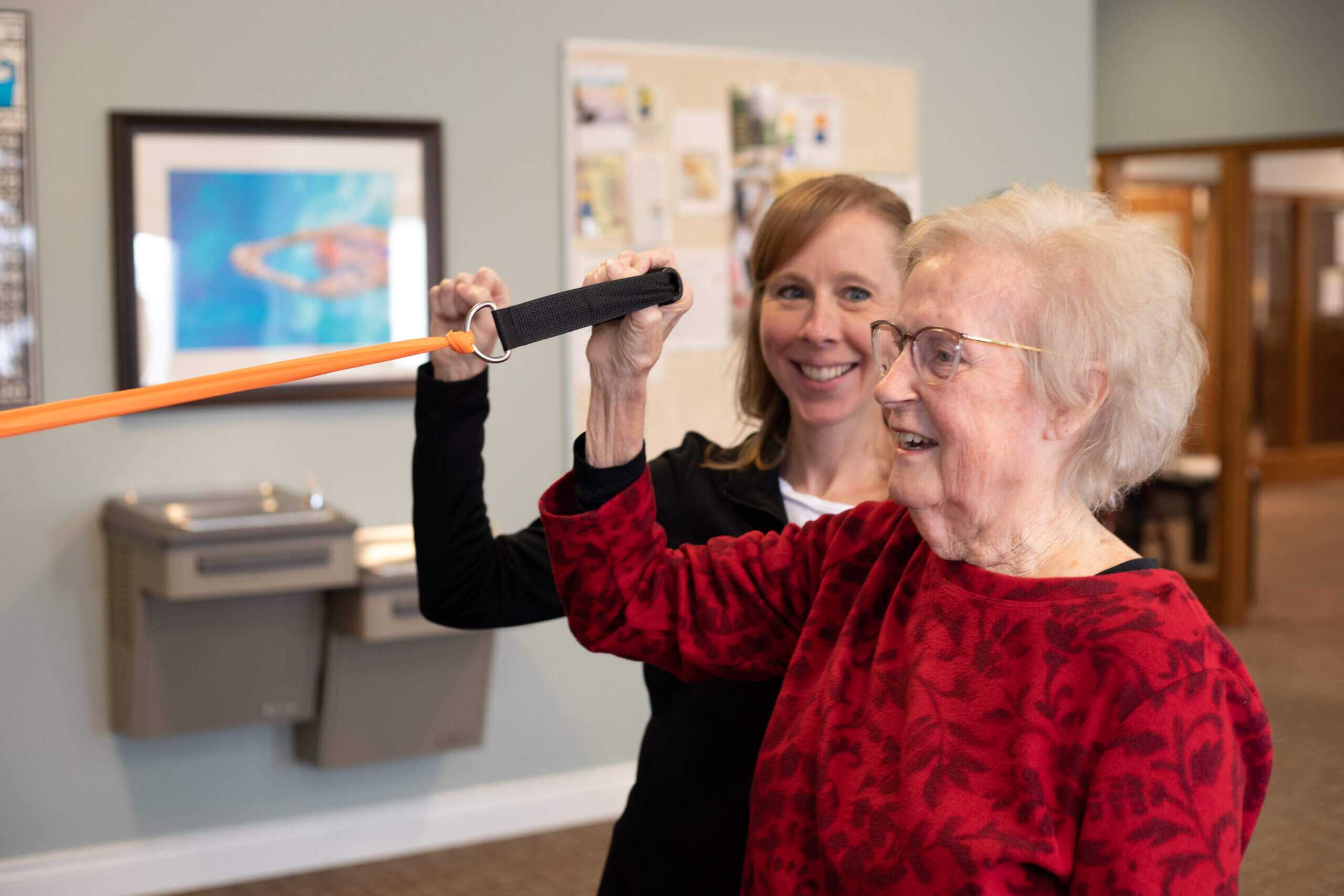Table of contents
Physical therapy is a way to relieve pain, improve movement, and restore physical function after an injury or illness. “The unknowns of physical therapy may be intimidating, but the outcomes are worth it,” encourages Julie Wilkins, VP of Enrichment at EmpowerMe Wellness. ”Don’t let fears or hesitations about physical therapy stop you from reaping the benefits it offers. The patients I’ve worked with have been grateful for the changes they’ve experienced.”
“The unknowns of physical therapy may be intimidating, but the outcomes are worth it.”
Physical therapy is a commonly recommended treatment for people over 65 who may experience age-related changes that affect their mobility and ability to perform daily tasks. But what can you expect at a physical therapy appointment, and how can you prepare for it? Here’s a guide to physical therapy for seniors.
First, you’ll need to find a qualified physical therapist who specializes in geriatric care. You can ask your doctor for a referral or search for local physical therapy clinics online. Look for therapists who have experience with the types of conditions or injuries you have. For more information, check out our post Physical Therapy for Seniors: When It’s Needed and How to Find It.
At your first appointment, the physical therapist will seek understanding of your goals for therapy and assess your physical abilities, range of motion, strength, and balance. They may ask you to perform certain movements or exercises to evaluate your condition and identify areas of weakness or tightness. They may also use tools such as gait belts, weights, or resistance bands to measure your strength and flexibility.
Based on your assessment, the physical therapist will develop a personalized treatment plan for you. This may include exercises you can do at home, stretches, massage, or other types of therapy. They may also recommend using assistive devices like braces, crutches, or a cane.
It’s important to follow your physical therapy program consistently, as it may take several weeks or months to see significant improvement. Your physical therapist will monitor your progress and modify your treatment plan as needed. They may also work with your doctor or other healthcare providers to coordinate your care.
A physical therapy session typically lasts between 30-60 minutes depending on the problem and your tolerance for therapy. That time can consist of modalities for pain and function like ultrasound, heat, cold and electric stimulation, stretching or mobilization, strengthening, and exercises for balance.
Therapy interventions usually are not painful and in fact, many relieve pain. If you have recently had surgery or an acute injury, some discomfort may be normal. Your therapist can collaborate with your physician or try different pain relieving techniques to create your most comfortable treatment plan.
Your therapist will likely be very specific with you about any expected soreness or changes in function. It is important to communicate at the start of each session how you felt after the prior one, or whether your function has changed for the better or worse.
Some additional tips for preparing for a physical therapy appointment include:
- Bring a list of your current medications, medical history, questions for the therapist, and any recent test results or imaging studies. You will also need your insurance card and physician order or referral depending on what your insurance requires.
- Wear comfortable, loose-fitting clothing and shoes that allow for easy movement. Bring along any of your assistive devices or orthosis too. Your therapist will communicate to you any other specific attire requirements.
- Be honest with your physical therapist about any pain or discomfort you’re experiencing.
- Stay hydrated and take medication as prescribed before your appointment.
- Aim to arrive a few minutes early to fill out any required paperwork.
Physical therapy can be a valuable tool for seniors looking to improve their quality of life and maintain their independence. With the right therapist and treatment plan, you can expect to see improvements in your mobility, pain levels, and overall physical function.
https://www.empowerme.com/blog/how-physical-therapy-can-get-seniors-moving
https://www.empowerme.com/blog/physical-therapy-for-seniors-when-its-needed-how-to-find-it



